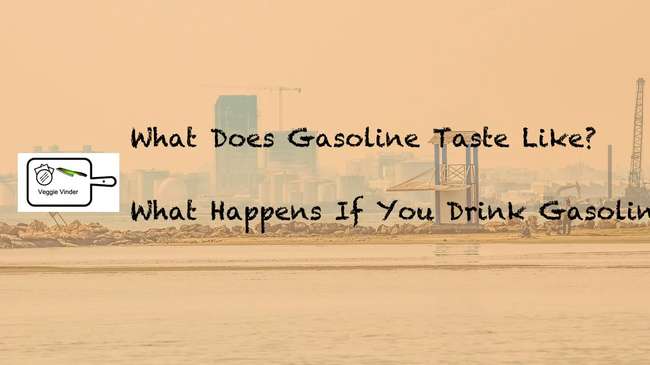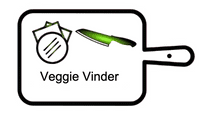What Does Gasoline Taste Like? What Happens If You Drink Gasoline?
Have you ever wondered what gasoline tastes like?
Or maybe you’ve seen someone drinking gasoline and thought they were crazy.
Well, I’m going to tell you exactly what happens when you drink gasoline.
Gasoline is a mixture of hydrocarbons or organic compounds that are derived from petroleum or natural gas.
Hydrocarbon molecules contain hydrogen atoms bonded to carbon atoms.
The simplest hydrocarbon molecule is methane, CH4.
Methane has four carbon atoms, each with two hydrogen atoms attached to them.
This makes four hydrogens per carbon atom.
When these hydrogens bond together, they form a chain of single bonds called a hydrocarbon.
Hydrocarbons are very volatile liquids that evaporate easily.
They also burn very easily.
Because of their volatility, they are flammable.
As a result, they are highly toxic.
In addition, because they are highly reactive, they react readily with other chemicals.
For example, when gasoline burns, it produces carbon dioxide, water vapor, and various gases
What is Gasoline?
Gasoline is a mixture of hydrocarbons hydrogen and carbon that are used as fuel. It is the main ingredient in gasoline. Hydrocarbon is a chemical compound containing hydrogen and carbon atoms bonded together. Hydrocarbons are classified into two groups based on the number of carbon atoms present in each molecule. Simple hydrocarbons have only one carbon atom per molecule while complex hydrocarbons have more than one carbon atom per molecule. Hydrocarbons are found in nature and are produced by many living organisms. Hydrocarbons are composed of three parts: a functional group, a chain length, and a branching pattern. Functional groups determine how the molecules react with other chemicals. For instance, alcohols have a hydroxyl -OH functional group. Alcohols react with acids to form esters. Esters have a carboxylic acid -COOH functional group. Carboxylic acids react with bases to form salts. Aromatic compounds have a benzene ring -CH=CH- functional group. Benzene reacts with metals to form aromatic complexes. Alkanes have no functional groups. Alkanes are not reactive. Chain lengths indicate the number of carbon atoms in a molecule. Carbon chains range from 4 to 60 carbons long. Branched structures have branches attached to the carbon chain. Branching patterns describe the arrangement of the branches relative to the carbon chain. In branched structures, branches may attach to any position along the carbon chain.

What Happens If You Drink Gasoline?
If you drink gasoline, it will cause severe damage to your stomach lining. Your body absorbs gasoline through your mouth, nose, and lungs. Once absorbed, gasoline enters your bloodstream where it travels to your liver. The liver breaks down gasoline into smaller components called metabolites. Metabolites are toxic substances that can harm cells in your body. If you consume enough gasoline, these toxins can kill you.
What Does Gasoline Taste Like?
Gasoline tastes sweet and fruity. It smells like rotten eggs. It has a strong odor. It is not pleasant to smell. How Do I Know if I Have Been Drinking Gasoline? Answer: If you think you drank gasoline, see your doctor right away. He/she will check your blood for signs of poisoning.
How do you get gasoline taste out of your mouth?
Yes! Diesel fuel is very clean burning and burns hotter than regular gasoline. This means that it creates less pollution and gives off less smoke. Diesel fuel is also cheaper than regular gasoline.
How does gasoline taste like?
Diesel fuel contains sulfur while gasoline does not. It is important to know what type of fuel you are using because different fuels produce different results. For instance, if you are driving a car that uses diesel fuel, you will notice that the engine runs smoother and produces fewer emissions. On the other hand, if you are driving an automobile that uses unleaded gas, you will notice that it runs rough and emits more pollutants.
How does gasoline look like?
If you have a metallic taste in your teeth, try brushing your teeth after eating something metal. This will help remove the metals from your mouth.
What Colour is gasoline?
Gasoline tastes like gasoline. It smells bad, but it doesn’t taste good. Gasoline is a mixture of hydrocarbons, oxygen, nitrogen, and other elements. Hydrocarbons are the main component of gasoline. Hydrocarbons are molecules composed of hydrogen and carbon atoms. Carbon is a very stable element, meaning it won’t change into anything else. Hydrogen is unstable because it changes easily into other elements. Nitrogen is a non-reactive element that doesn’t react with any other substance. Oxygen is reactive, and reacts with many substances.
Does diesel taste good?
Toothpaste works great to get rid of the taste of gas. Just brush your teeth with toothpaste and rinse off with water.
How can you tell the difference between diesel and unleaded?
You can get gasoline taste out of the mouth by using toothpaste. Toothpaste contains baking soda and salt. So, if you put some toothpaste in your mouth and swish it around, it will help remove the smell from your mouth.
How do I get the taste of gasoline out of my mouth?
It looks like a liquid. It is a clear, colorless liquid. It is stored in tanks and pumped into the engine of a vehicle. What is the difference between petrol and diesel? Answer: Petrol and diesel are two different types of fuels. Both of these fuels are used to power vehicles. However, petrol is used to run cars while diesel is used to run heavy duty vehicles like buses, trucks, and lorries.
How do you treat a metallic taste in your mouth?
Gasoline is a mixture of hydrocarbons, mostly paraffin waxes and naphthalene. It is colourless or light yellowish in appearance. Gasoline is used as fuel for vehicles such as cars, motorcycles, boats, lawn mowers, snowmobiles, tractors, trucks, and other motorized equipment. Gasoline is also used in gas stoves, fireplaces, furnaces, and heating systems. In addition, gasoline is used in many industrial processes.
